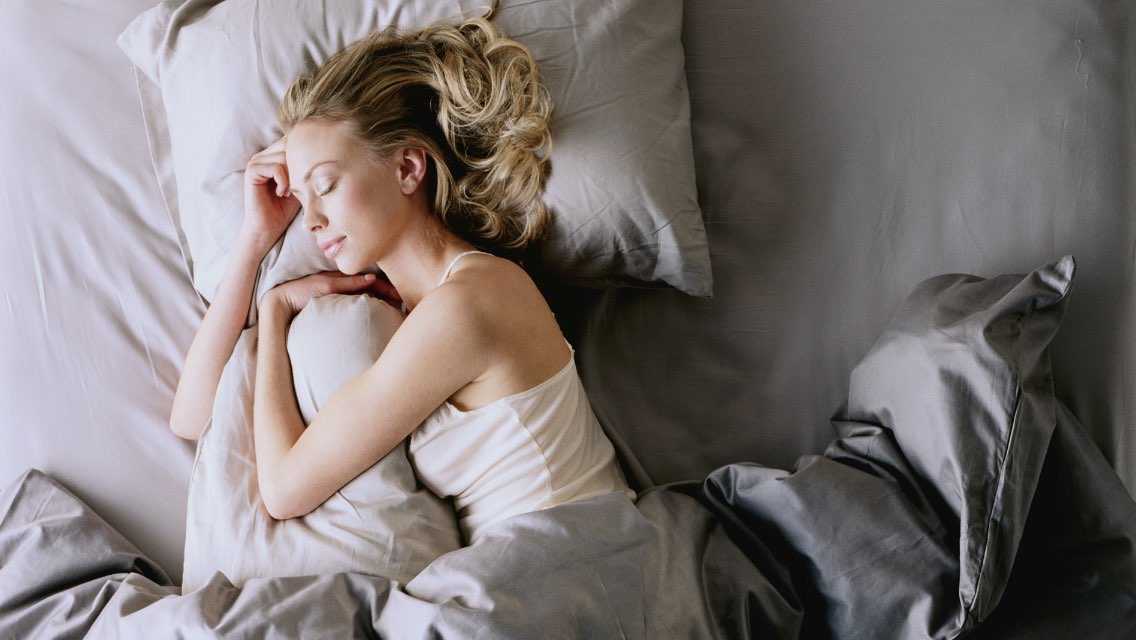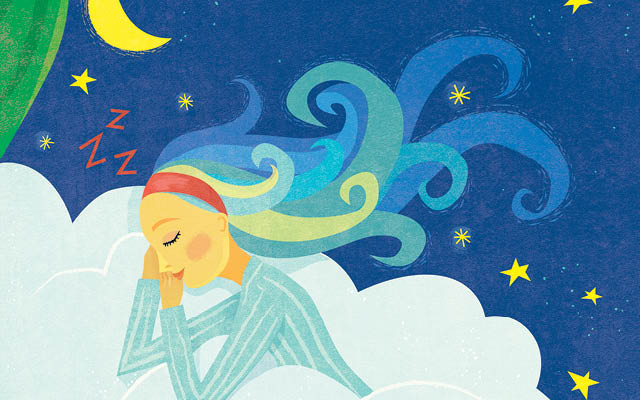
There’s a good reason we spend about one-third of our lives sleeping: While we may not be alert and aware of it, our bodies are performing many important functions to rebuild, repair, and support our overall health and well-being.
To better understand what’s occurring while we’re asleep, it can be helpful to look at the different phases and stages of our sleep. Sleep occurs in cycles throughout the night, with each cycle divided into two phases: rapid eye movement (REM) and non-rapid eye movement (NREM). NREM is then further divided into three stages: N1, N2, and N3.
Here’s what’s happening during each of those phases:
REM
About 25 percent of sleep time is spent in this phase, with it increasing in duration as the night progresses. No body movement occurs, but your brain is awake, and your eyes often dart back-and-forth, which is why it’s referred to as rapid eye movement. This is when dreaming happens and is the phase that can be associated with improved cognitive function.
NREM
The other 75 percent of your sleep time is spent in the stages of NREM. Early in the night, when NREM is more predominant, the body focuses on physical repair. In the first few hours of drifting off, secretion of growth hormone is released, which aides in the maintenance and repair of tissues and organs.
- N1: This is the shortest stage of sleep, lasting just a few minutes during the time you shift from being awake to asleep.
- N2: This is a transitional sleep stage. It’s light enough that you could be easily woken up, but your brain waves are generally slower than they are in the N1 stage. There will often be a decrease in your body temperature and heart rate during this time as your body is preparing for deep sleep.
- N3: This is the deep sleep stage. There’s an increase in activity in the glymphatic system, which aides in the removal of waste from your brain.
It’s key that we go through each of these phases and stages in order to reap the benefits of sleep and wake up feeling refreshed and ready to take on the day. However, there are a number of factors that can cause disruption.
Take a look at what a typical sleep cycle might look like, then how that can change if other elements come into play. (Note: These are all approximate depictions. Everyone is different; this is meant to offer a general look at how different factors and habits can alter your sleep cycle.)
Typical Sleep Cycle

Generally speaking, this is what a normal sleep cycle looks like. Throughout the night, you move from light to deep sleep, then into the REM phase, with this cycle repeating itself several times over through the course of the evening.
During the first half of sleep, you may notice that more time is spent in deep sleep, which is when physical repair and recovery happens. In the latter half, more time is increasingly in REM, which is when cognitive repair happens, emotional regulation is supported, and memories are formed.
How Caffeine Can Impact Your Sleep Cycle
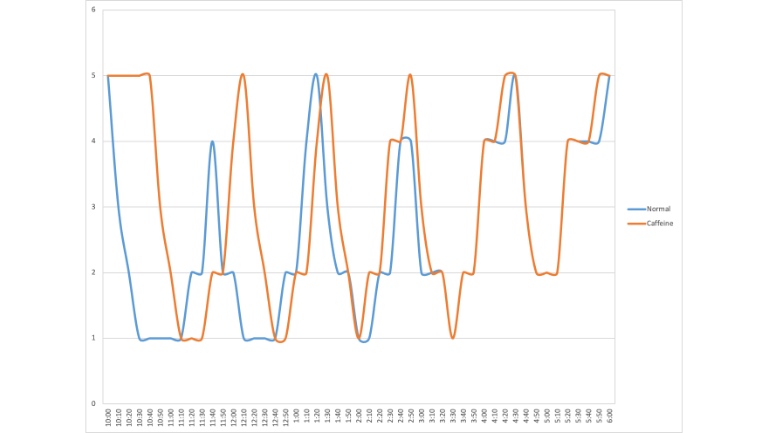
Caffeine is a stimulant, and as such, can delay your ability to fall asleep if consumed too close to bedtime. It can also prevent you from getting into deep sleep, meaning you’ll spend less time in the restorative phase of sleep.
It’s important to note that the half-life of caffeine, on average, is approximately five hours. This means that if you drink a 12-ounce latte (which is considered “small” by many coffee shop chains) at 4 p.m., about half of that caffeine may still in your system around 9 p.m. — and quarter of it at midnight. (How quickly you metabolize caffeine can be traced to genetics, which may at least partially explain why some people can drink it any time of day and not have any sleep issues.)
Furthermore, you may wake up more frequently or find yourself lying awake for a period of time during the night, with that less-restful sleep leaving you feeling groggy in the morning and ready to reach for a source of caffeine again.
How Alcohol Can Impact Your Sleep Cycle
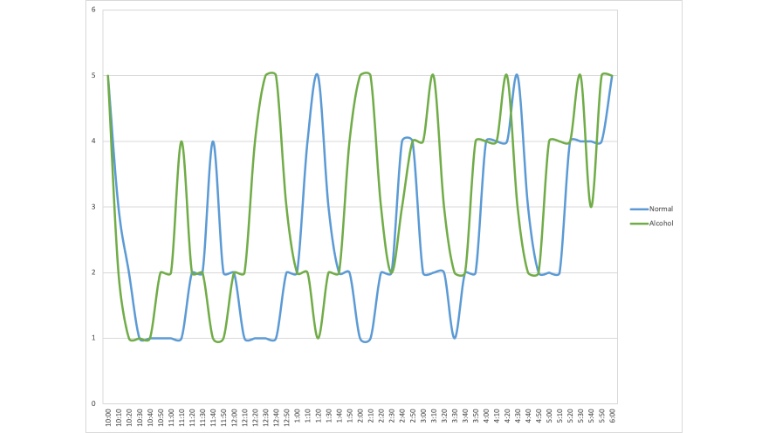
Contrary to popular belief, alcohol does not aid in sleep. Alcohol is a sedative, so it can knock you out fairly quickly, however, after that it can wreak havoc on your sleep. (In essence, sedation is not sleep.)
Your blood sugar can drop a few hours after drinking, and as a result, your body releases stress hormones to try to bring it back up to baseline. These hormone surges can cause a lot of tossing, turning, and restlessness.
If you consume too much or it’s too close to bedtime, alcohol also can reduce your time in deep and REM sleep, as well as wake you more frequently throughout the night.
How Blue Light Can Impact Your Sleep Cycle
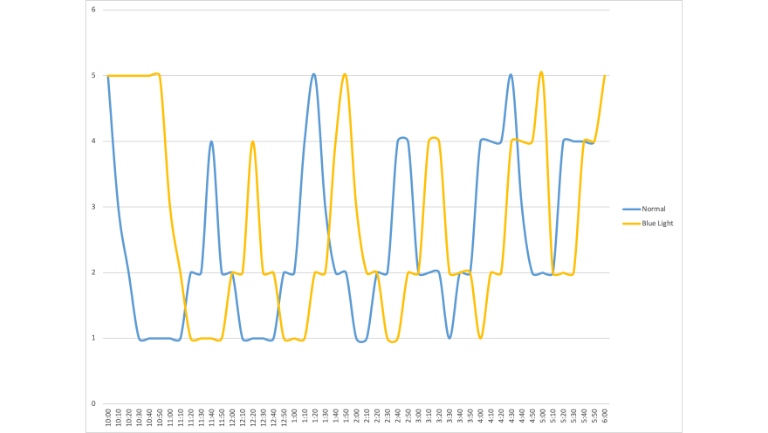
Melatonin is a hormone that’s dictated by light and darkness. Ideally, it’s at its lowest in the morning (when it’s light) to help you feel awake, and highest at night (when it’s dark) to help you feel sleepy.
Blue light — which is emitted by the sun, electronics, and screens — suppresses melatonin levels; this is why sunlight can wake you up in the morning. But if you’re using a phone, TV, or other device at night, it’s like sending a signal to your body that it’s not time for rest yet, pushing out your bedtime and reducing your total hours asleep.
Your body’s circadian rhythm is strongly influenced by several external inputs, and limiting exposure to blue light in the evening hours is important for optimal sleep and recovery.
How Stress Can Impact Your Sleep Cycle
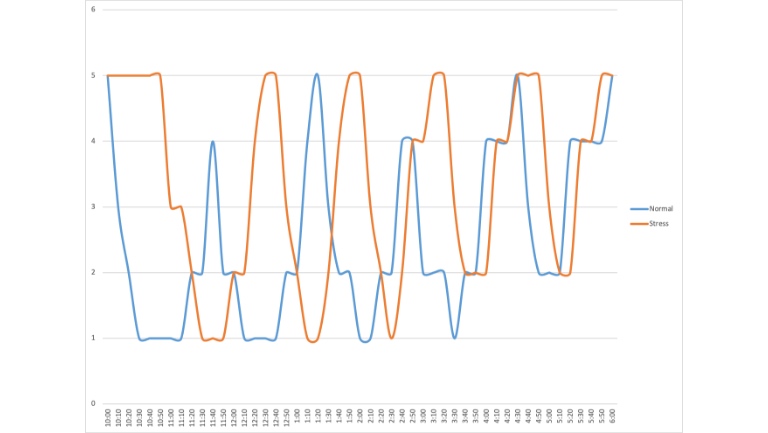
Have you ever laid awake with your mind racing? Chronic stress increases cortisol levels, which can throw off melatonin and disrupt your blood-sugar levels. This combination can cause you to be awake for much longer during the night, further reducing your time in deep as well as REM sleep.
How Nicotine Can Impact Your Sleep Cycle
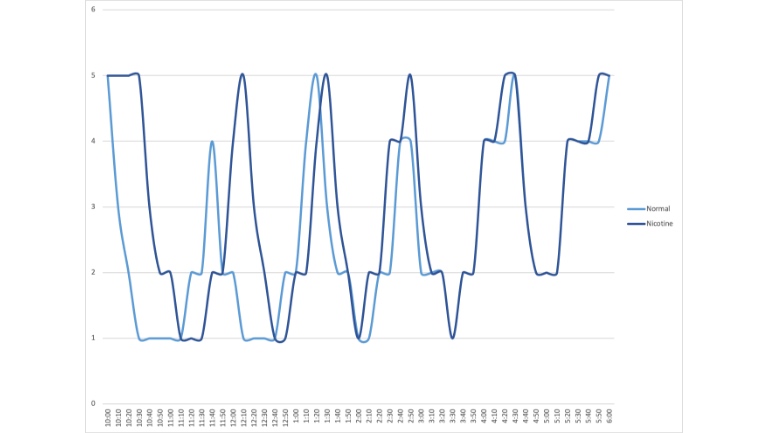
Nicotine is another stimulant and, like caffeine, can hinder you from falling asleep. It can also decrease both your deep and REM sleep and increase the number of times you wake up during the night, leaving you feeling fatigued in the morning.
How Blood Sugar Can Impact Your Sleep Cycle
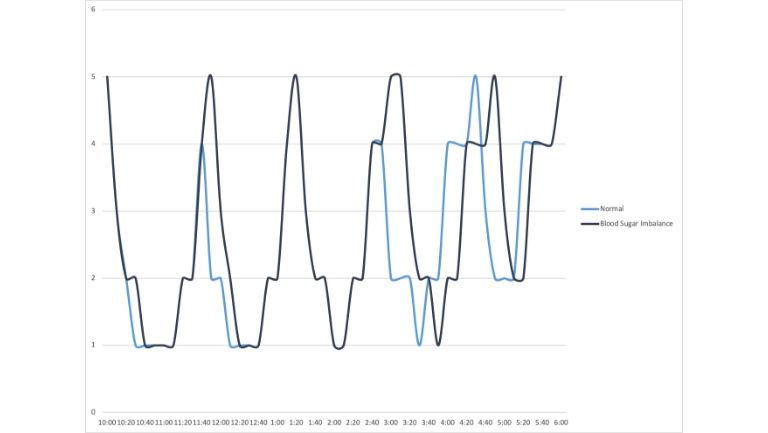
If your blood sugar isn’t balanced during the day, then you run the risk of it continuing to spike and fall repeatedly throughout the night. Hormones such as cortisol and norepinephrine will work to regulate it when it dips too low, but because these hormones are stimulating, they can cause you to wake up more frequently.
How Exercise Can Impact Your Sleep Cycle
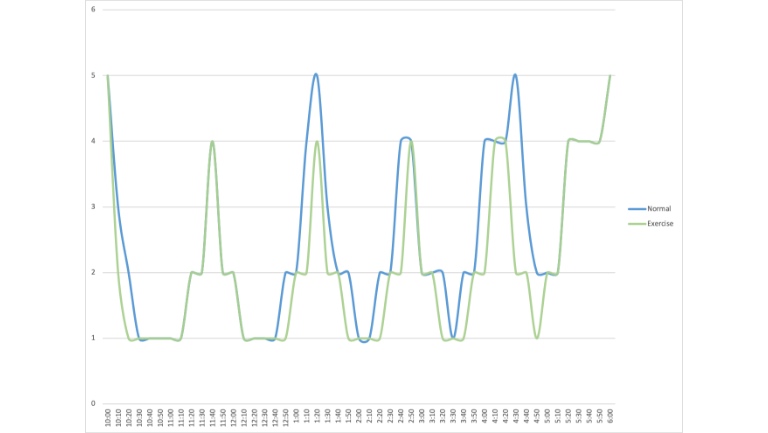
Here’s one that has a positive effect: Exercise can help you fall asleep faster and increase the amount of time you spend in deep sleep. This makes sense because sleep is the time for physical repair and recovery. Because you spend less time in REM the night after completely a particularly tough workout, you may feel like you “slept like a rock” or not be able to remember your dreams.
For the best effect on your sleep, try to exercise around the same time every day. Note that the earlier you can get your workout done the better, as late evening exercise can spike cortisol and decrease melatonin for some people.
While this list of factors is by no means comprehensive, these are some of the lifestyle-related habits within our control that can influence how well and how much sleep we get. By doing what you can to avoid the things you know negatively impact quality shuteye and prioritizing getting seven to eight hours per night consistently, you can be well on your way to restful sleep and the proper repair and recovery that comes along with it.
Creating a Healthy Nighttime Routine
In addition to the factors above, there are other things you can do to help cue your body that it’s time for rest, supporting your ability to fall asleep faster and get a longer period of slumber.
- Aim to begin winding down about an hour or so before bed. This could include any activities that help you relax, such as drinking a cup of hot herbal tea, taking a bath, reading a book, or doing some light yoga or stretching.
- Optimize your bed environment to provide the right level of comfort and support for you. If you find that you’re regularly waking up due to discomfort throughout the night, consider whether it might be time to consider a new mattress, pillows, or different sheets or bedding.
- Limit your use of electronics not only to reduce your blue light exposure, but also to avoid the negative stimulation that can sometimes come from social media, emails, or the news right before bedtime.
- Dim the lights and lower the temperature. Many experts suggest we sleep best in temperatures around 60 to 67 degrees F. It can also be helpful to take a warm bath, as your body temperature will naturally cool not long after you get out.
